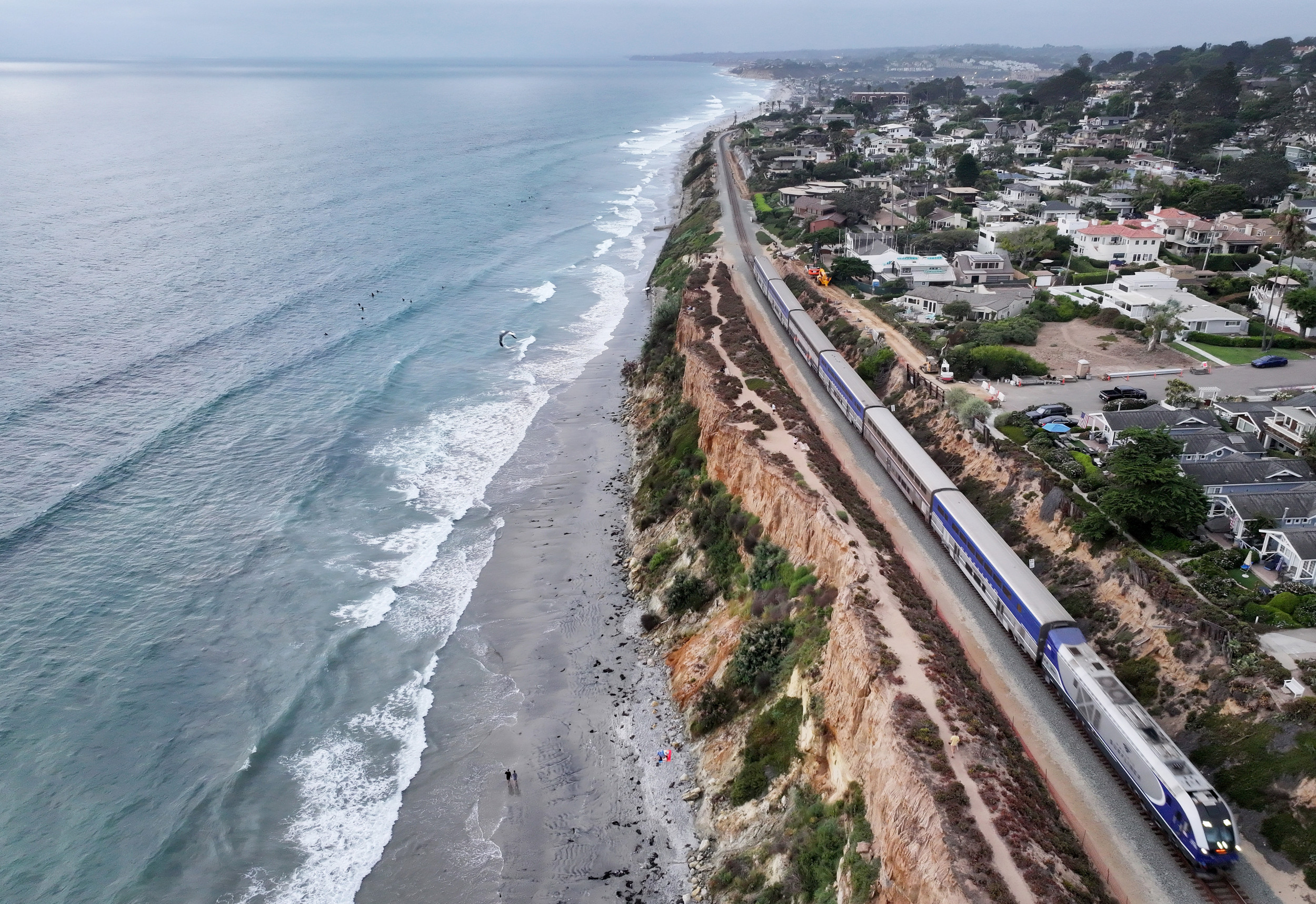In the battle against coastal erosion, a creative new tactic has emerged—using electricity to reinforce our shorelines. A recent study by scientists at Northwestern University, featured in Communications Earth and the Environment, demonstrates a promising way to bolster coastal resilience.
Research lead Alessandro Rotta Loria explained, “With over 40% of the global population residing in coastal regions, erosion poses a significant threat amid rising sea levels and climate change,” which results in substantial economic losses yearly.

Mario Tama/Getty
Taking cues from marine organisms like clams, which build their shells with minerals from seawater, the researchers employed a similar approach but infused it with electrical energy to create a natural cement from marine minerals.
This innovative method involves applying a gentle electric current to wet sand, initiating chemical reactions that transform minerals into solid compounds, binding sand grains into a stronger, rock-like material.
While exploring such techniques is vital, researchers stress that we need a sustainable, comprehensive strategy for coastal protection, rather than just more concrete structures.
Unlike traditional methods like sea walls or cement injections, which are costly and environmentally damaging, this electrical method offers an economical and sustainable alternative.

Northwestern University
Lab tests revealed the technique’s effectiveness on various sand types, showing promising results in a short time frame. “Just a few days of electrical stimulation yielded impressive outcomes,” Rotta Loria noted, with long-lasting impacts even after treatment.
Importantly, this method is eco-friendly and reversible, ensuring minimal disruption to marine ecosystems. Cost analysis suggests significant savings—as much as 90%—compared to traditional binding methods.
“The potential applications are vast,” added Rotta Loria, pointing out uses from seawall fortification to stabilizing sand dunes and enhancing marine foundations.
Next up for the research team are field tests to assess real-world viability. They aim to use electrically conductive geotextiles—metal grids designed to conduct electricity—in practical applications.
“We’re at the beginning stages of this research,” Rotta Loria shared. “While the outlook is optimistic, we’re anticipating challenges ahead.”
References
Landivar Macias, A., Jacobsen, S. D., & Rotta Loria, A. F. (2024). Electrodeposition of calcareous cement from seawater in marine silica sands. Communications Earth & Environment, 5(1), 1–11. https://doi.org/10.1038/s43247-024-01604-3
